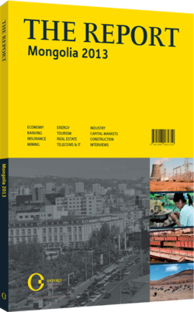Branding cashmere: Initiatives well under way to catch up with regional and global players
As Mongolia works to shore up its industries – investing in production facilities lacking in capital and working to improve sourcing methods – it is also paying attention to the far end of the value chain: marketing.
Under the Sovietmodel, products did not have to be sold, as the state ordered almost everything. After the collapse, it was an aspect of business largely ignored. The country has plenty of commodities, so there has been little incentive to invest in anything beyond basic sales. In the case of herders, it was easy to have traders and wholesalers pick up the goods and pay for them.
MORE VALUE: Mongolia wants more value generated and created within its borders. In the case of some commodities, such as coal and iron ore, that means processing. For cashmere, that means more spinning. It also means branding. While the country has a number of cashmere names, and some such as Gobi are internationally known, their images are relatively weak and do not send much of a message. Without a strong brand, Mongolian cashmere misses out on much of the profit. The country sells both locally made products under local names and raw cashmere, the former attracting the narrow premiums, the latter leaving the real profit to the global brands that manufacture clothing from Mongolian cashmere and sell it as their own.
One solution is for the Mongolian cashmere makers to form a single brand name and invest in it, an idea that has been kicking around for a while but at yet not implemented. The Mongolian Wool and Cashmere Association’s “100% Pure Cashmere” campaign was one such effort. In 2011 an Agricultural Marketing and Branding Development Project was sponsored by the Asian Development Bank (ADB) to continue this work, with the ADB also providing technical assistance and collaborating with the association and the Ministry of Food, Agriculture and Light Industry (now the Ministry of Industry and Agriculture).
The creation of the brand is being led by Jeremy Hildreth, a “place branding” pioneer who has worked with Lithuania, London, Northern Ireland, Rio de Janeiro, East Timor, Poland and Latvia in refining their images. In terms of the Mongolia, Hildreth saw that it would be best to focus on the fibre itself, as the finished goods are not yet of international quality. Branding the fibre also allows famous labels elsewhere in the world to use the Mongolian logo without diluting their own image. This in-branding, rather than co-branding, will likely get the most takers as the two labels can be stitched into the same article of clothing without any conflict.
TRADITIONAL SCRIPT: Next, Hildreth set about creating a logo. They settled on the name Mongolia Noble Fibre, held a contest and had a few of the leading designs sent to a Danish company for further modification. What emerged was a logo utilising the word khan, or king, written using traditional Mongolian script.
If effective, the campaign could help distinguish Mongolian fibres from those of China, the world’s leading producer. It aims to convey a sense of an open and free country with a deep history and a respect for human rights and the environment. That sort of image could attract individuals and companies, such as Patagonia, that make socially responsible purchasing choices.
MONEY & MORE: The project is quite simple: it is about resources. The individual companies, not to mention the herders and wholesalers, lack the means to create a global brand, a process that can take a decade and cost millions. This is a key issue according to B. Battsetseg, senior officer at the department for coordination of light industrial policy implementation, in the Ministry of Industry and Agriculture. “They don’t have the resources to undertake big promotional activities to introduce products,” he told OBG. By working together, however, the industry, the ADB and the government can afford to hire top-rated designers to do the job.
Herders and businessmen who want their fibres to be Noble Fibres will ultimately need to meet certain standards. The project will provide them advice and require that they produce cashmere of a high quality. This will create a feedback mechanism that was lost when the collective system was replaced with informal traders.
You have reached the limit of premium articles you can view for free.
Choose from the options below to purchase print or digital editions of our Reports. You can also purchase a website subscription giving you unlimited access to all of our Reports online for 12 months.
If you have already purchased this Report or have a website subscription, please login to continue.

